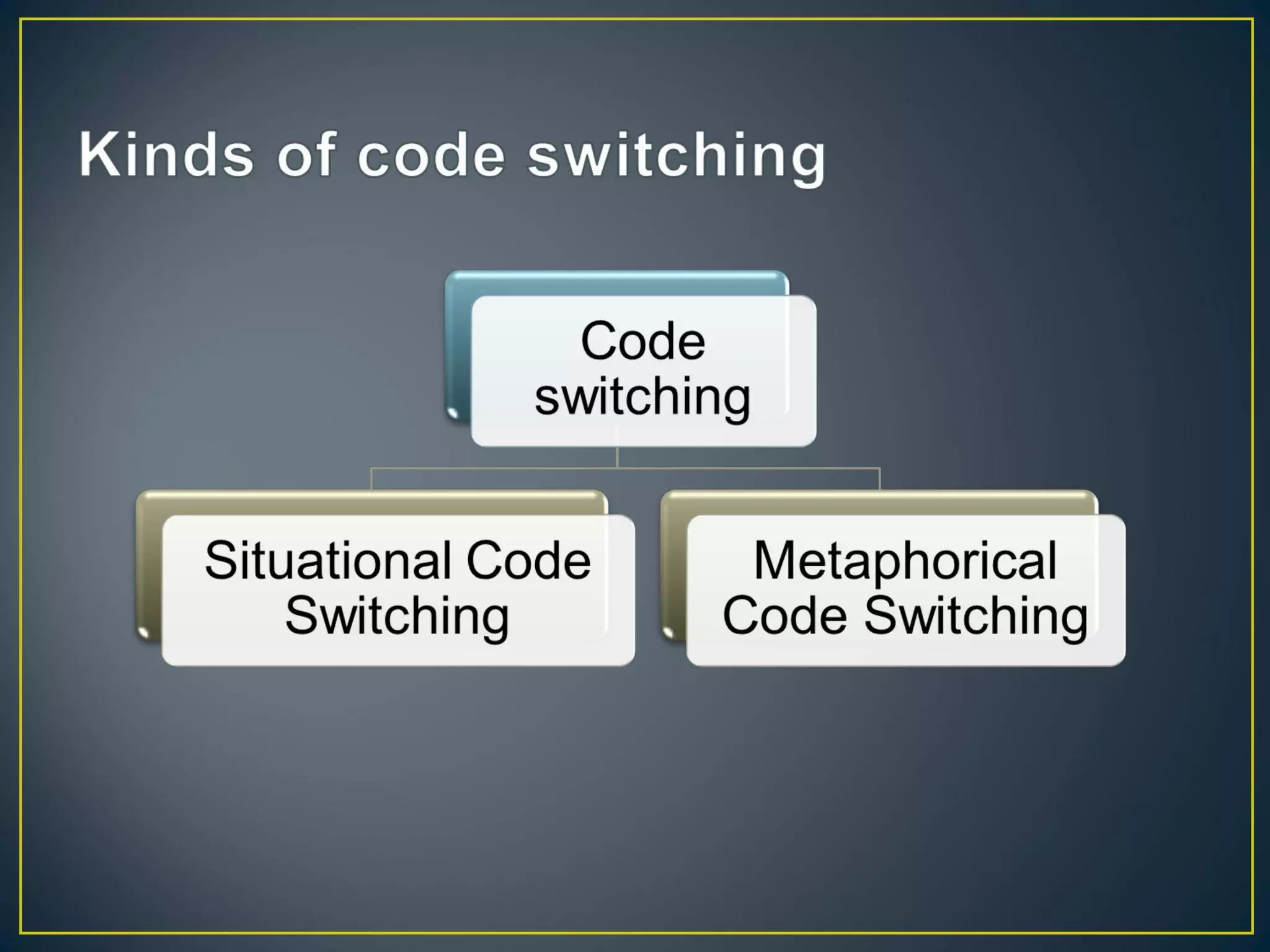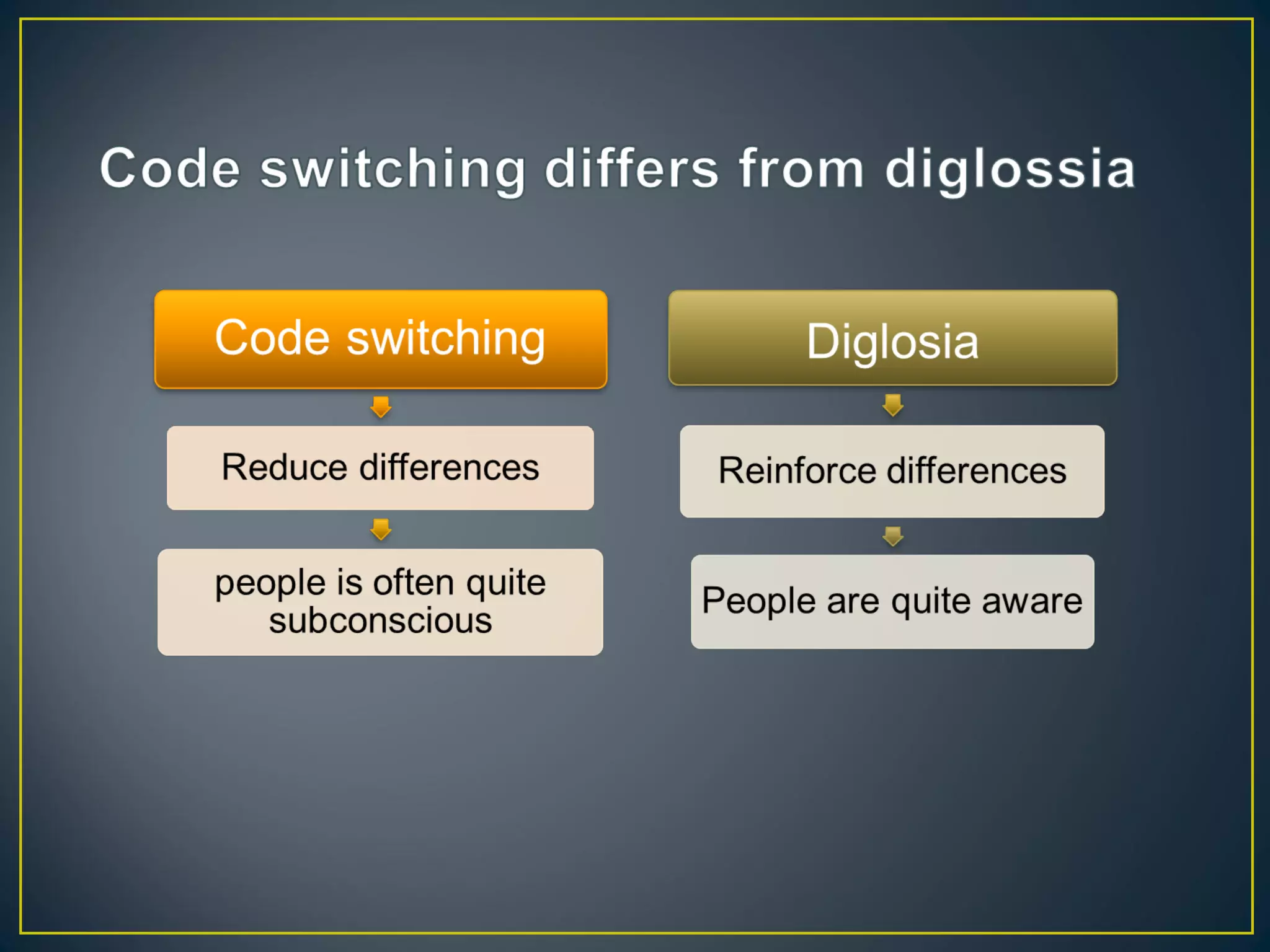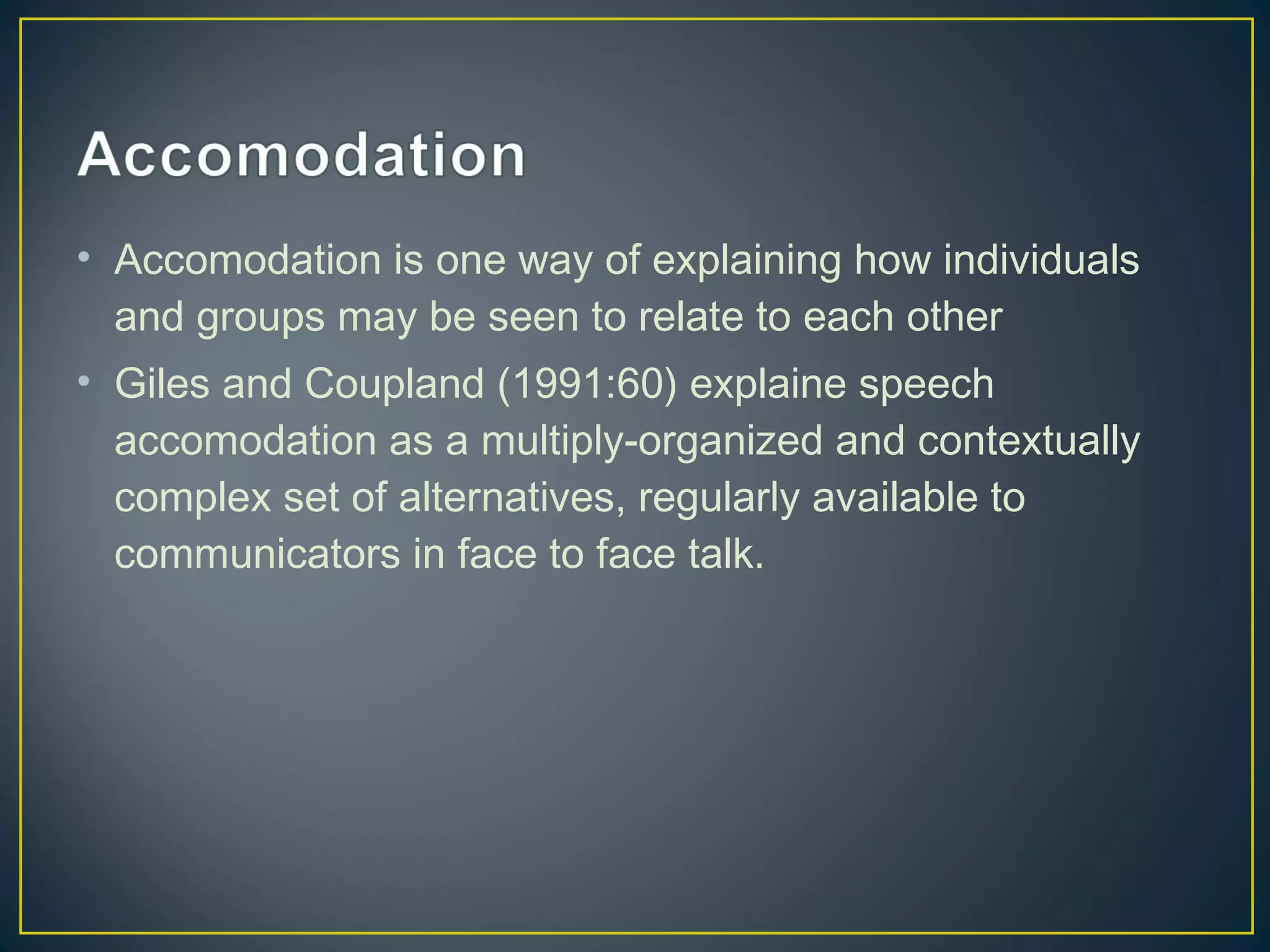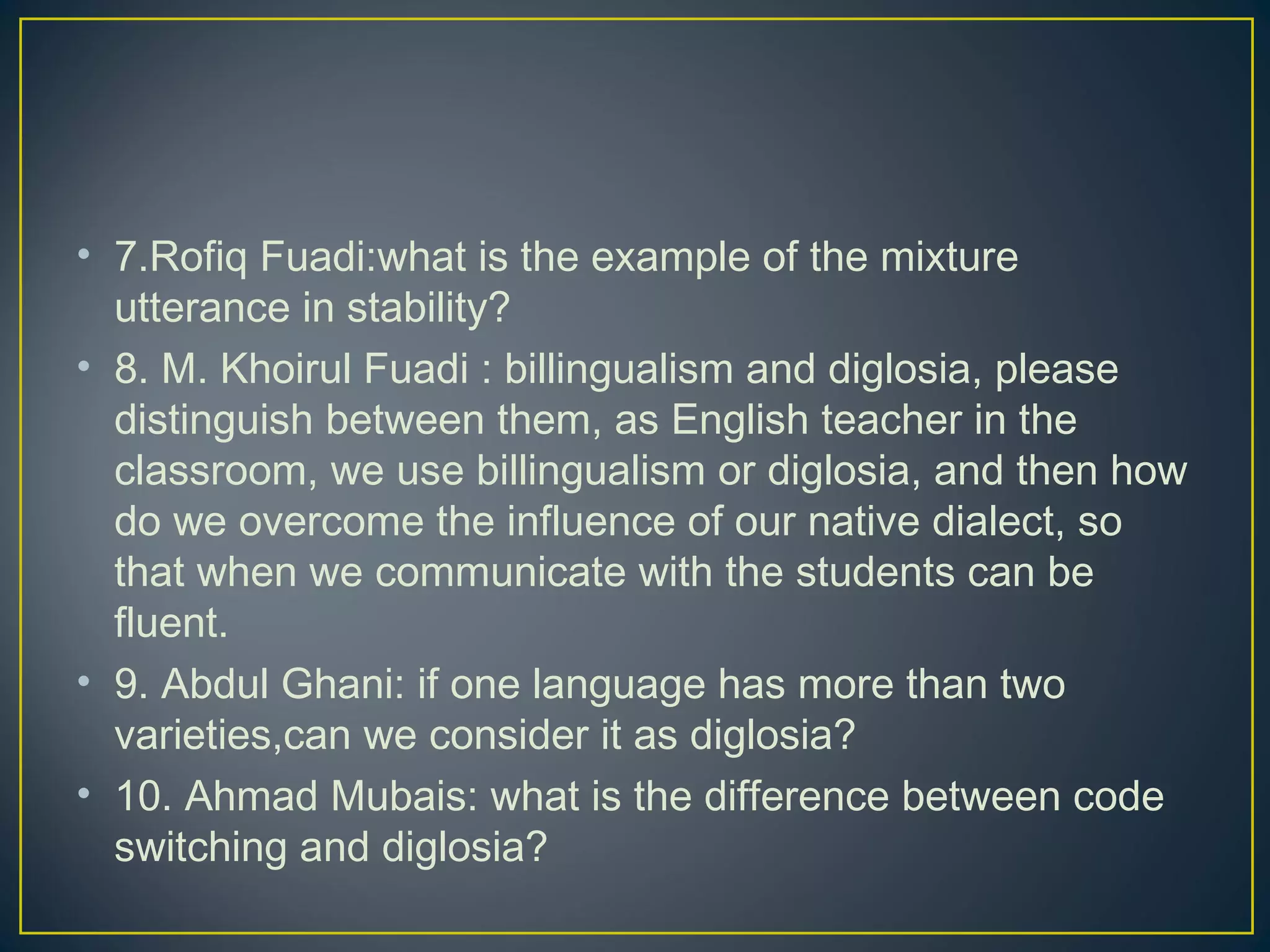1. Code switching refers to switching between two or more languages or language varieties within a conversation. It can occur between speaker turns or within a single turn.
2. Diglossia describes a stable language situation where two varieties of the same language are used differently, such as a high (H) variety for formal contexts and a low (L) variety for informal contexts.
3. Examples of diglossia include Arabic (H variety for formal contexts vs. colloquial Arabic as L variety), and Swiss German (H variety) vs. local dialects (L varieties). Code switching is a conversational strategy while digloss




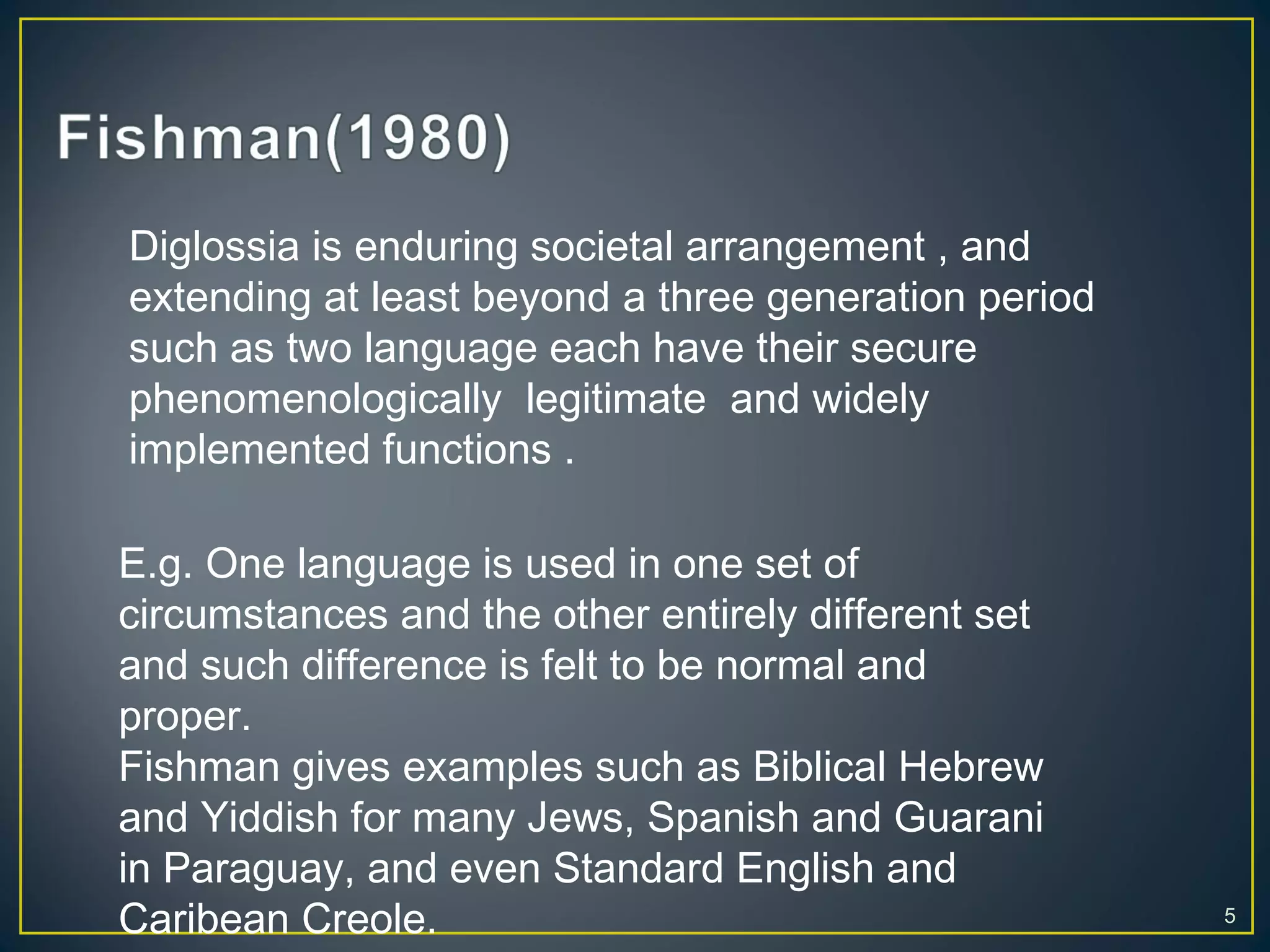



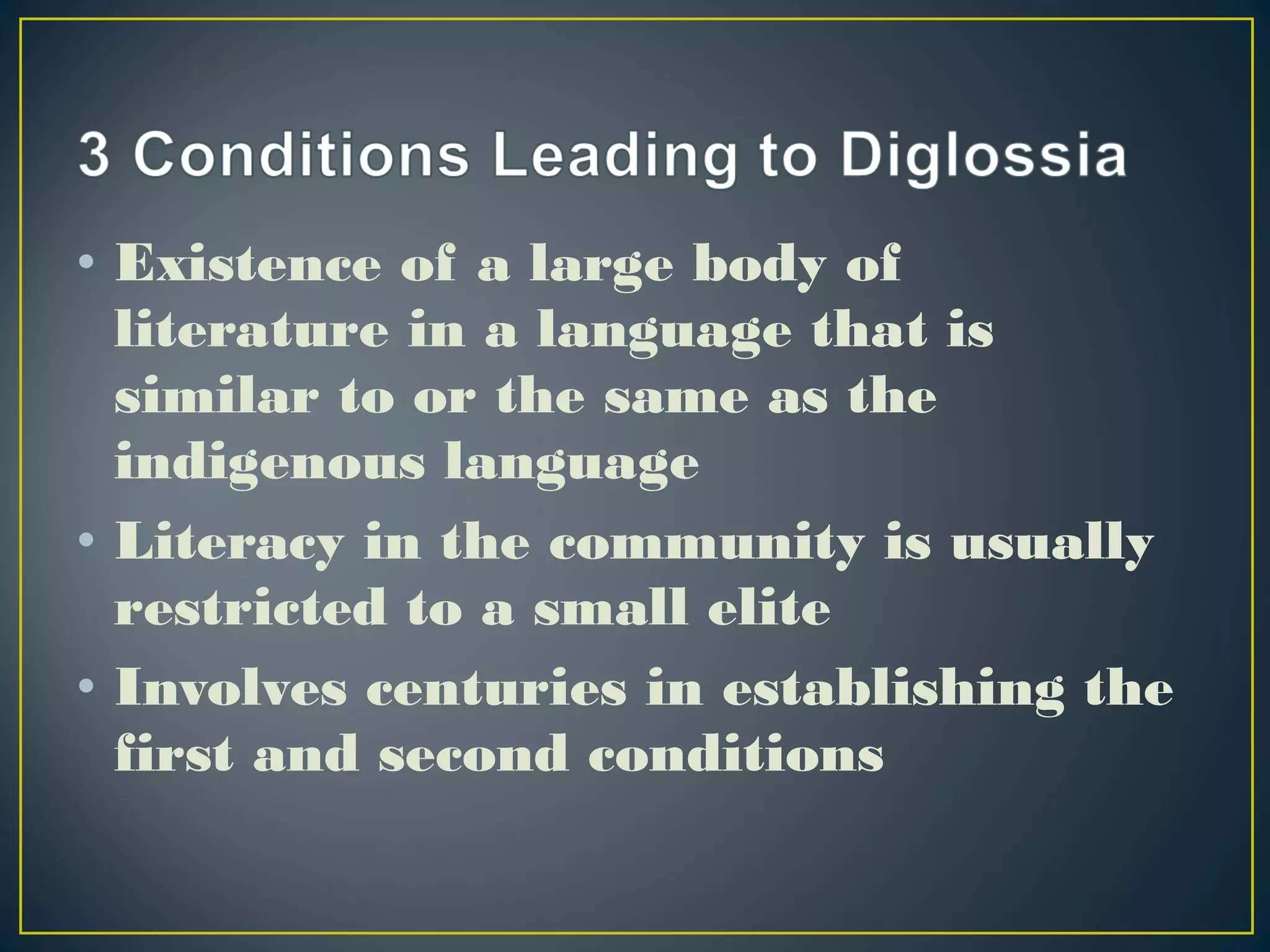
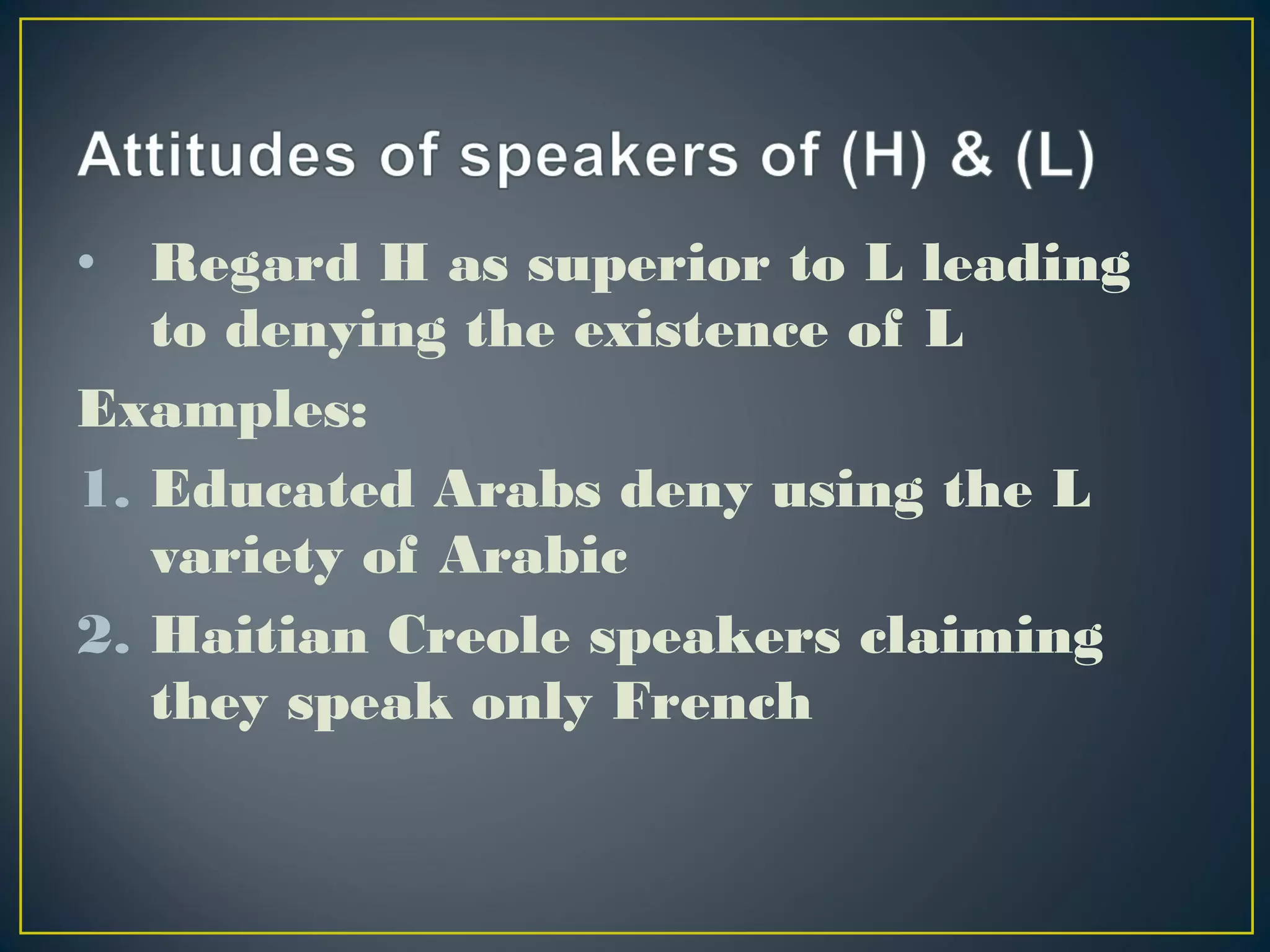
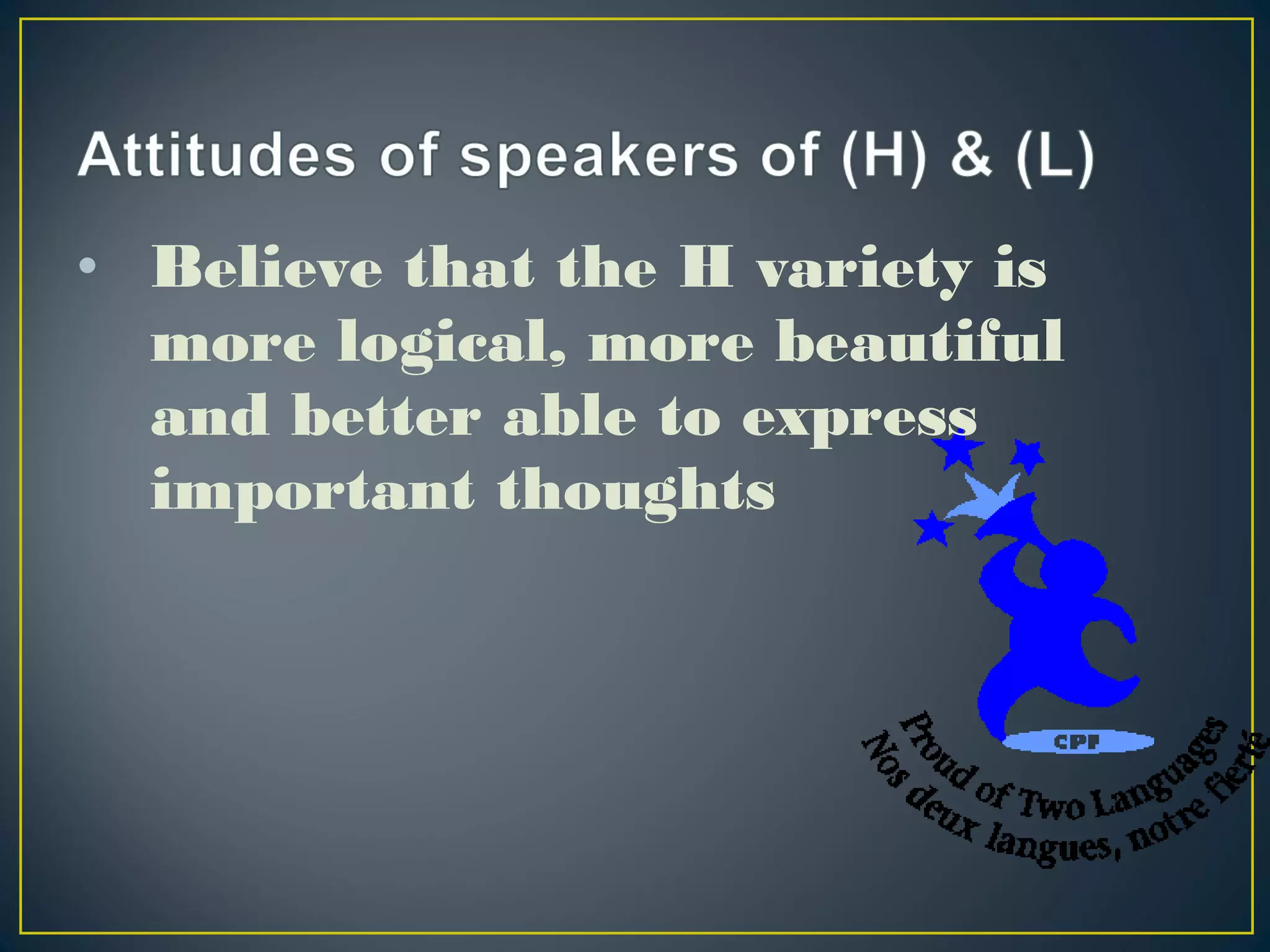


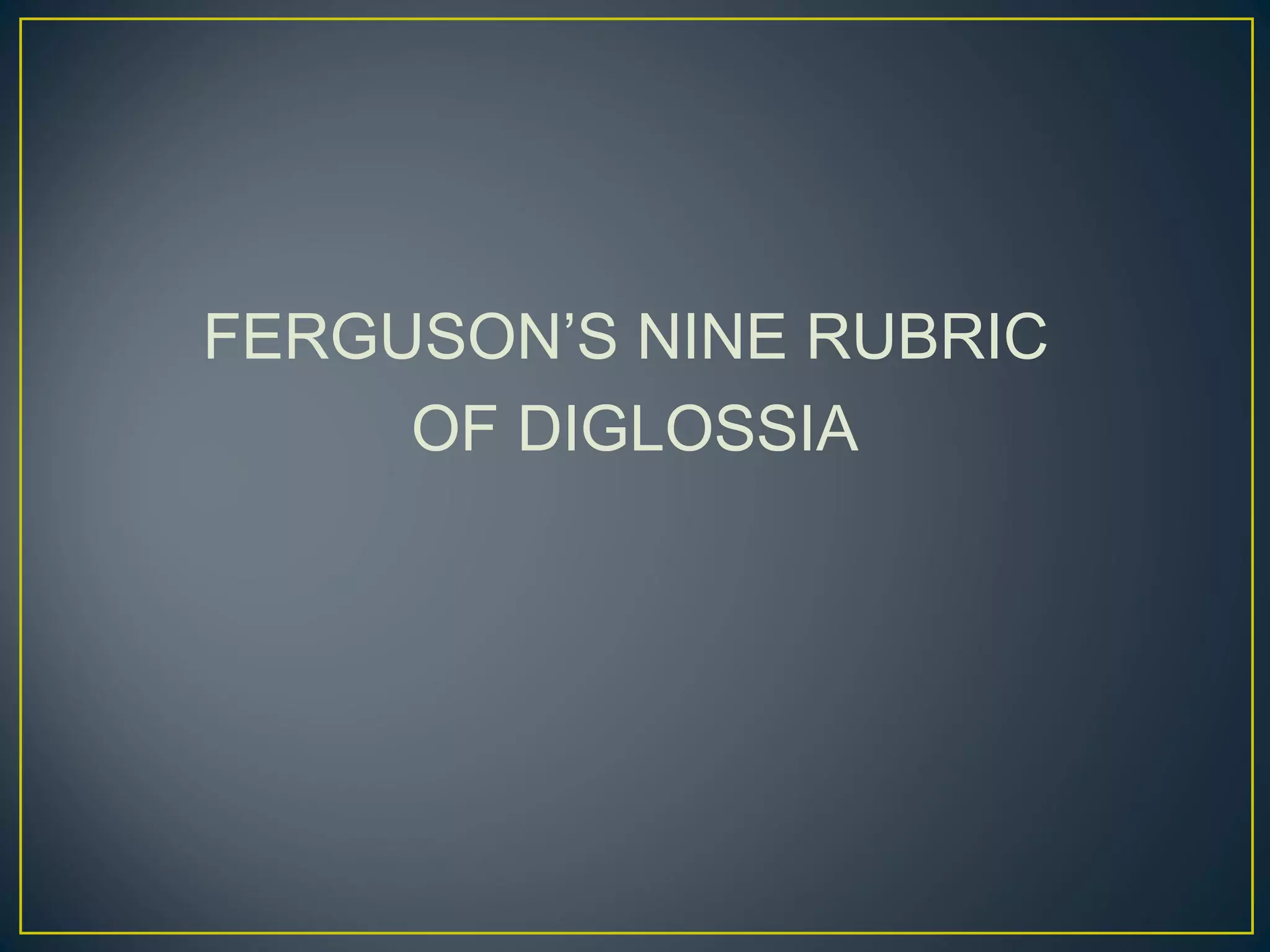







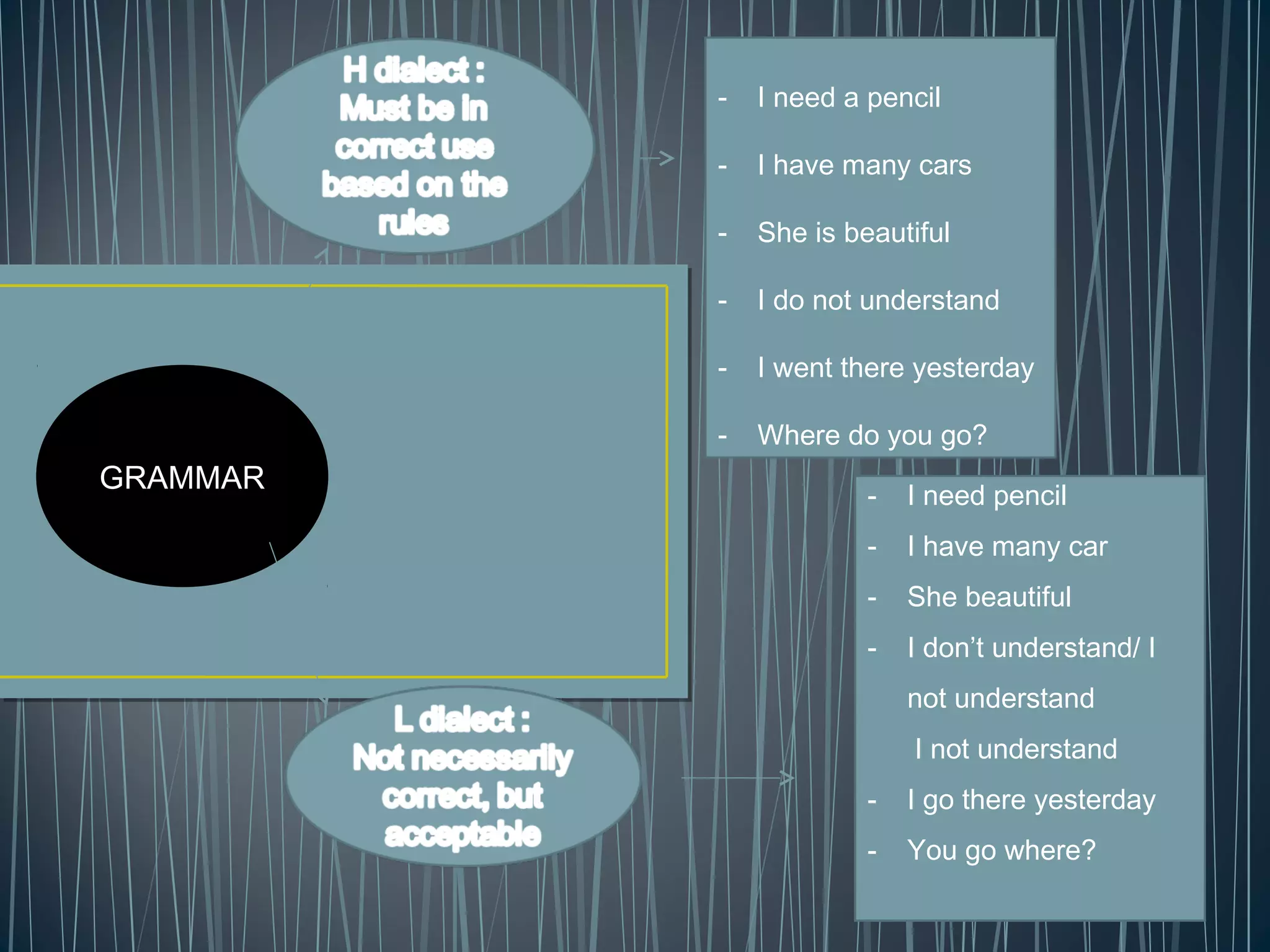

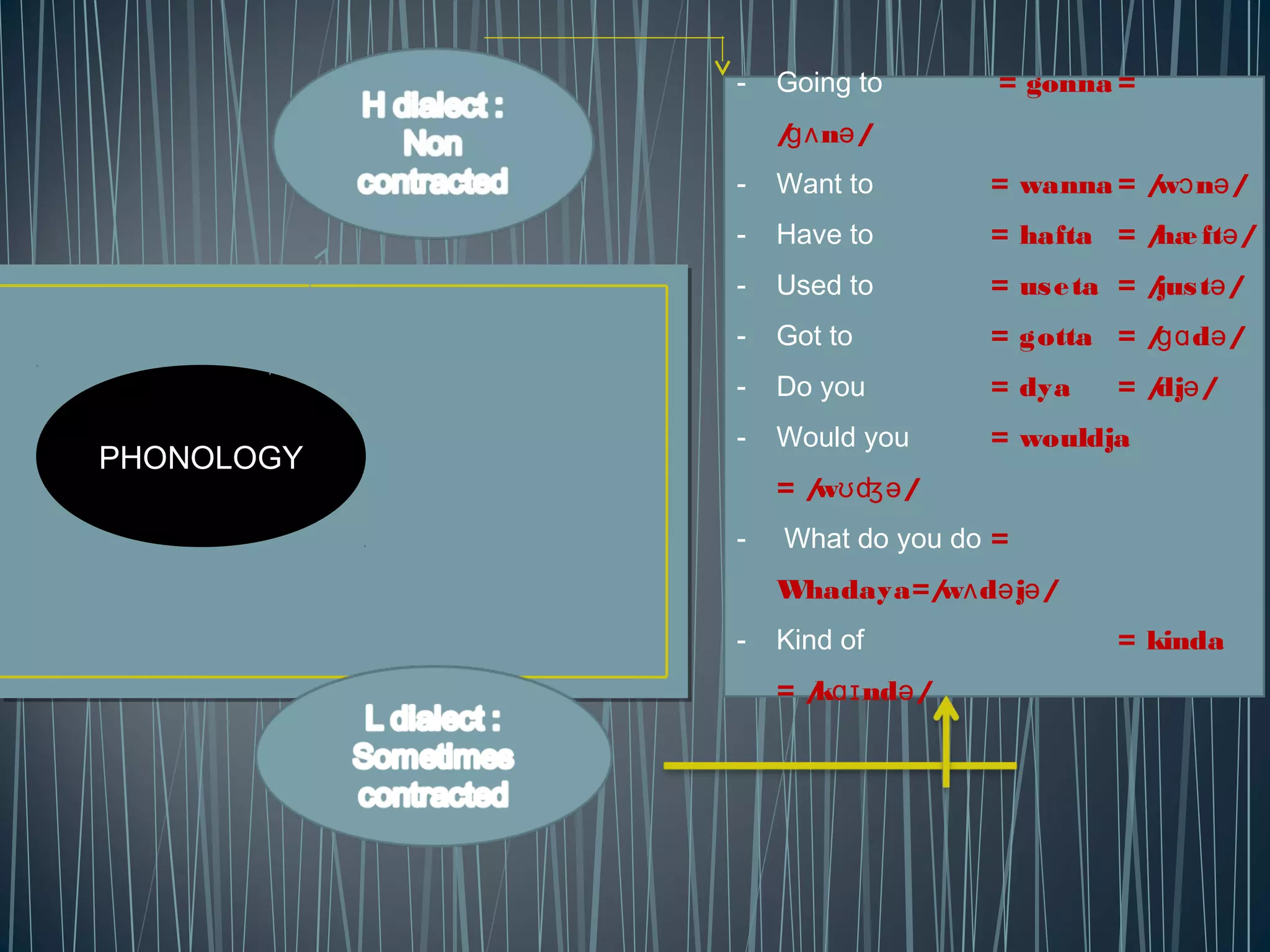
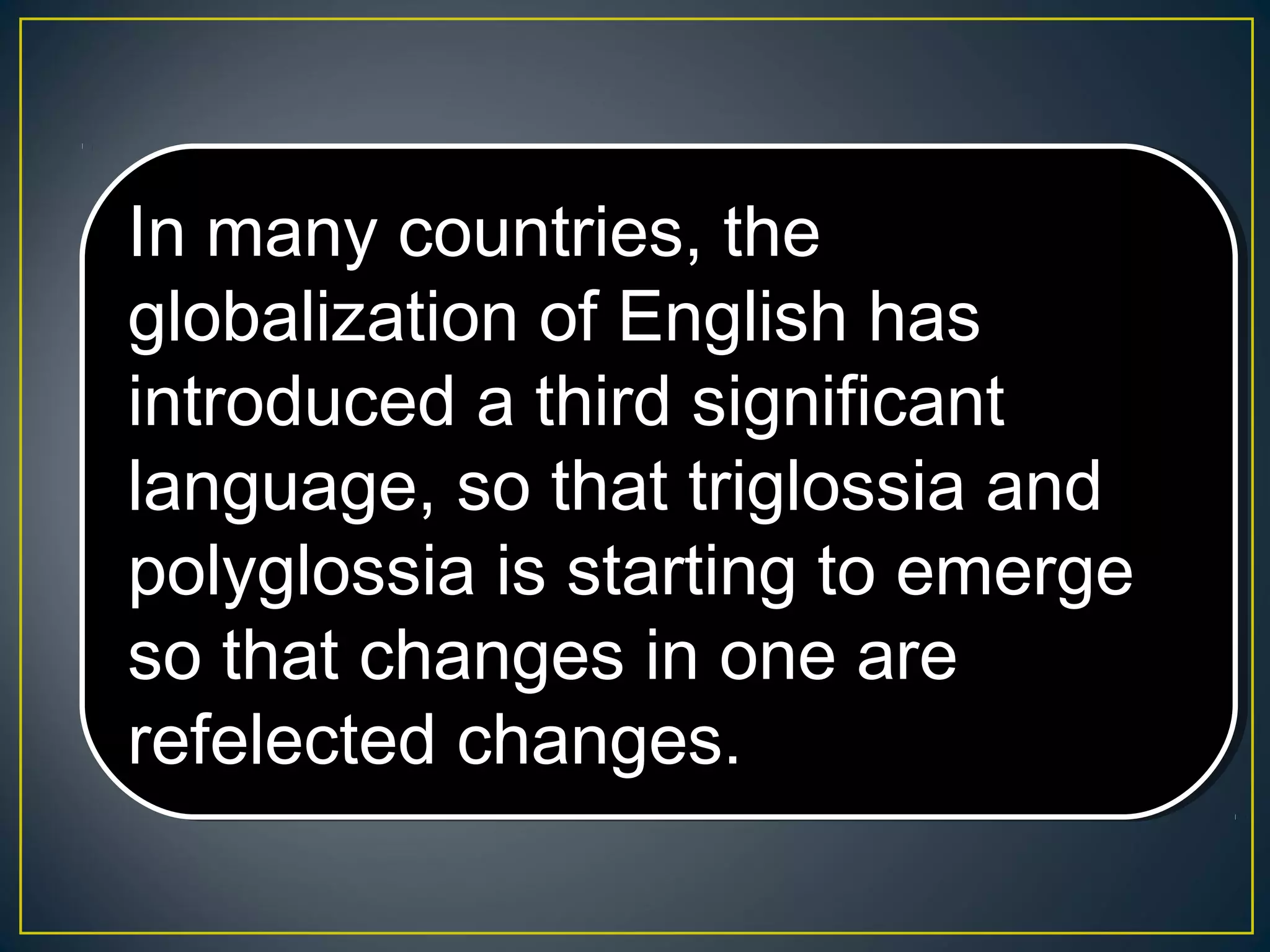

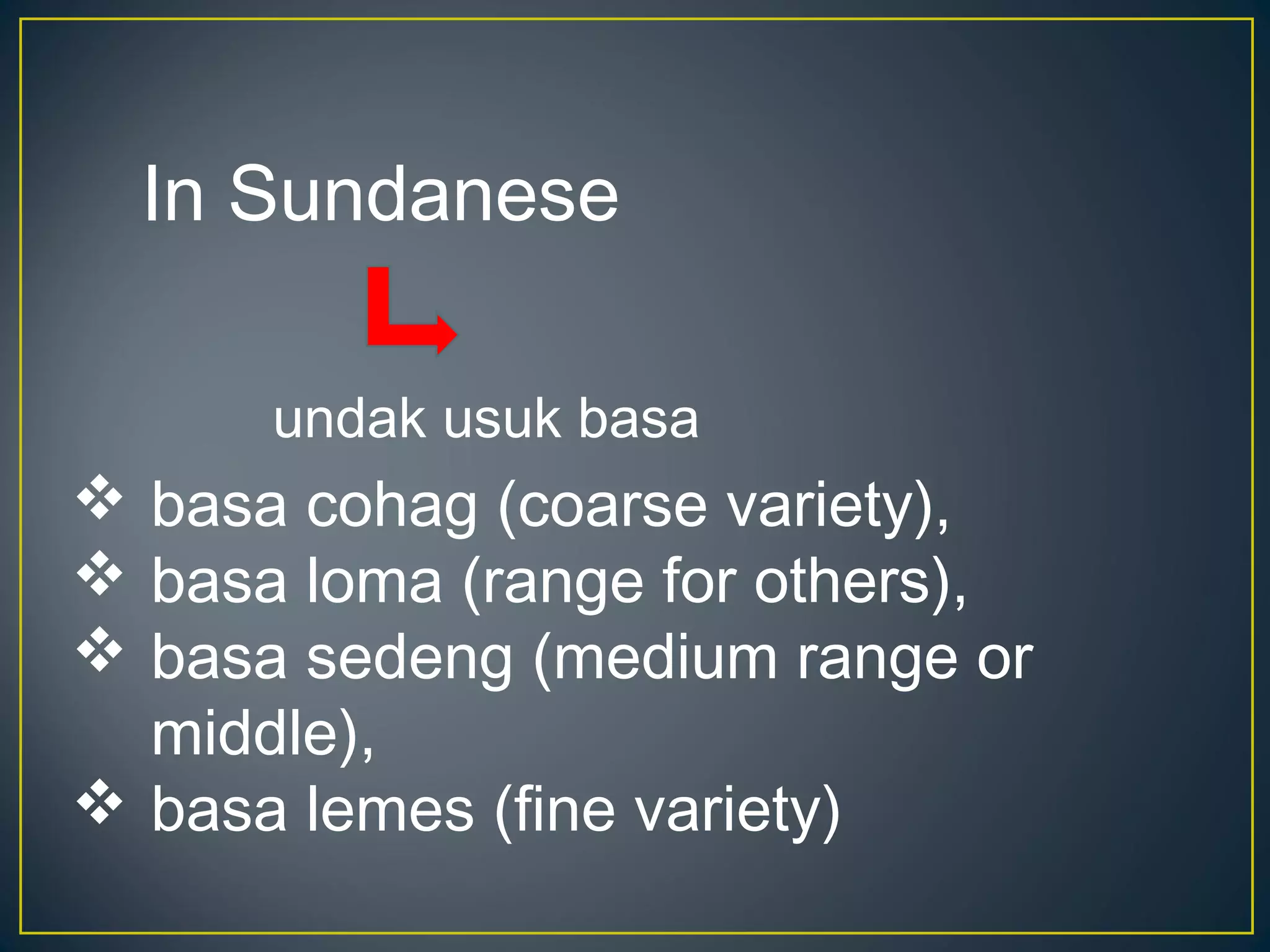








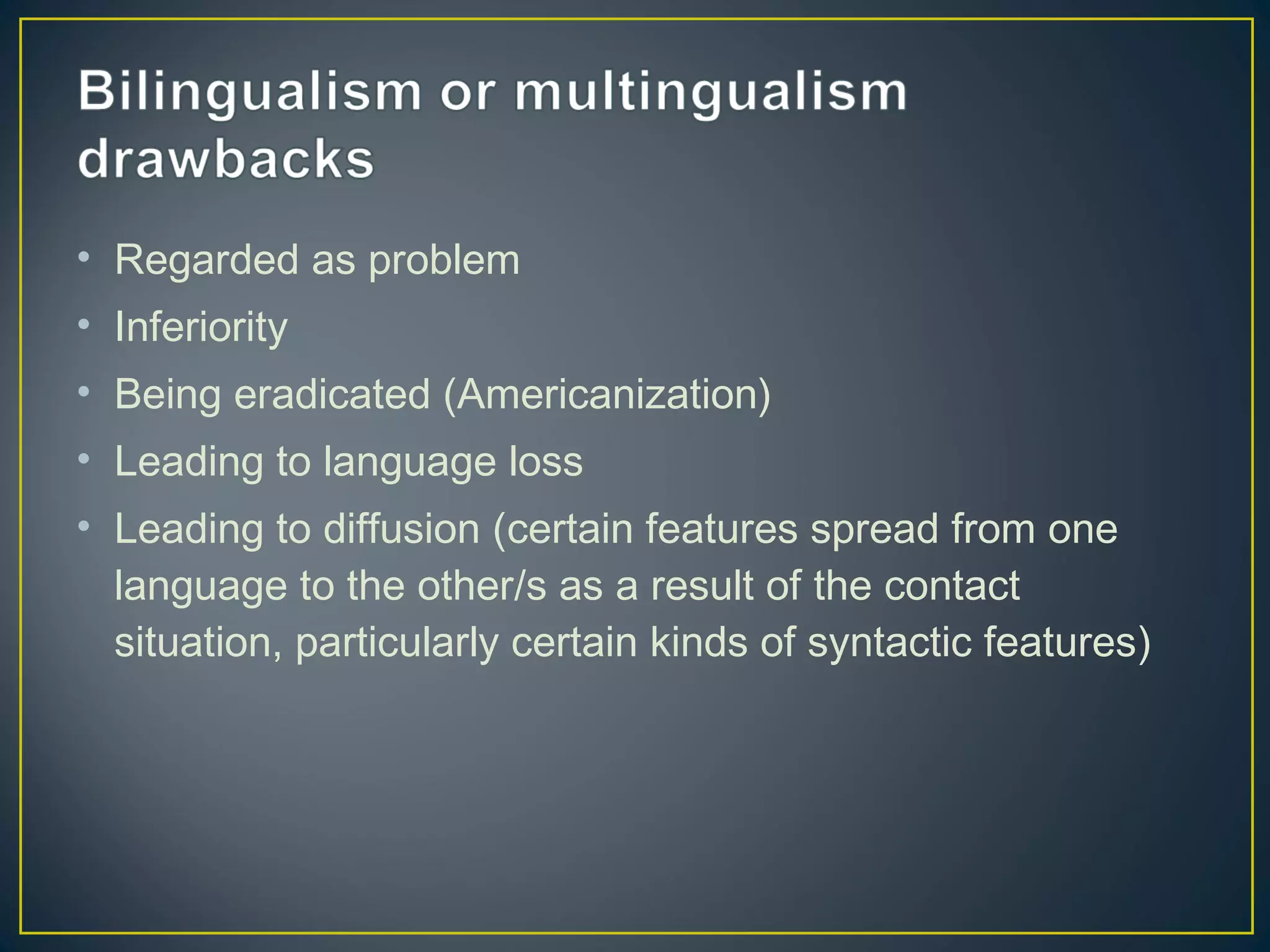


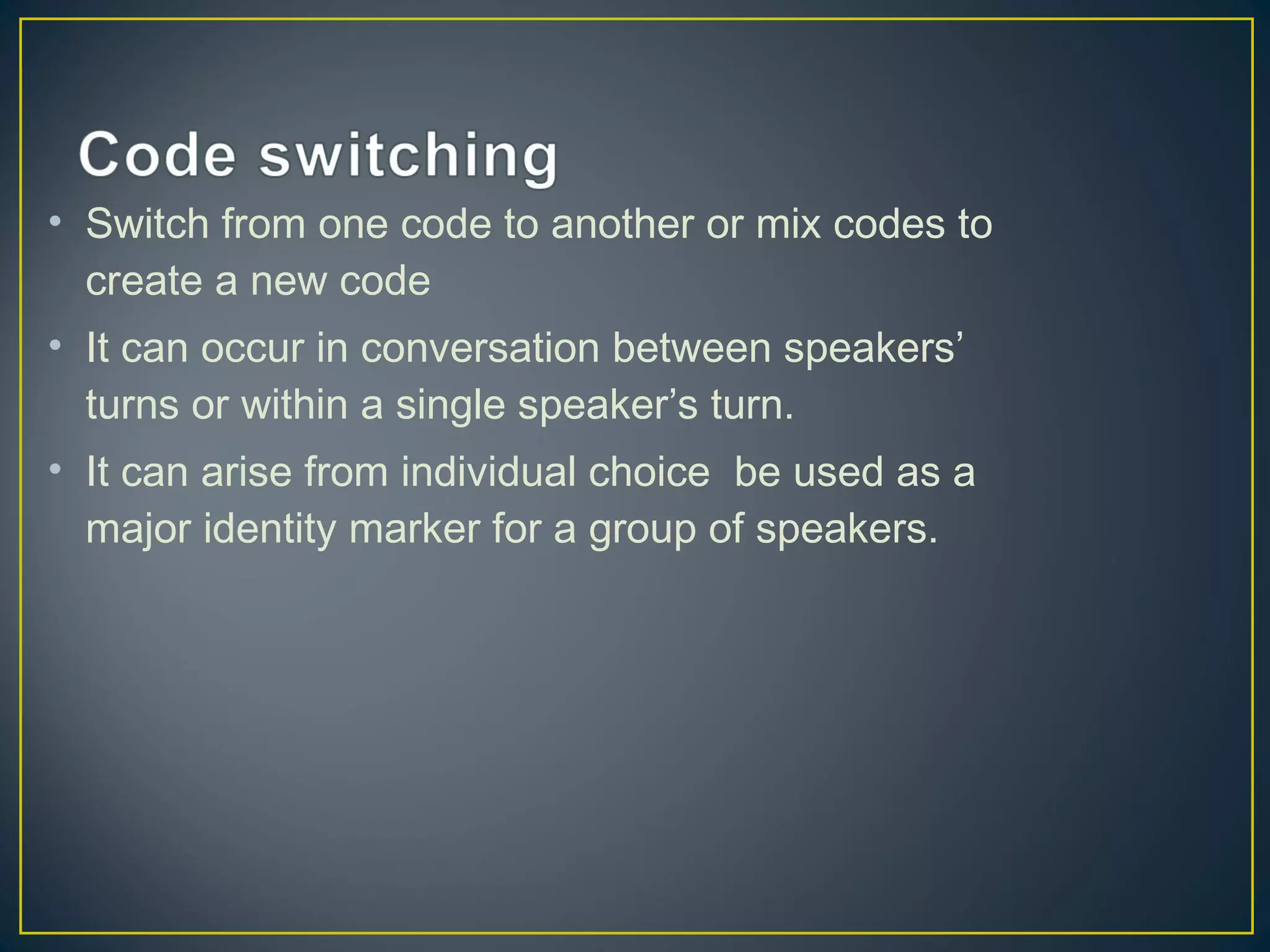
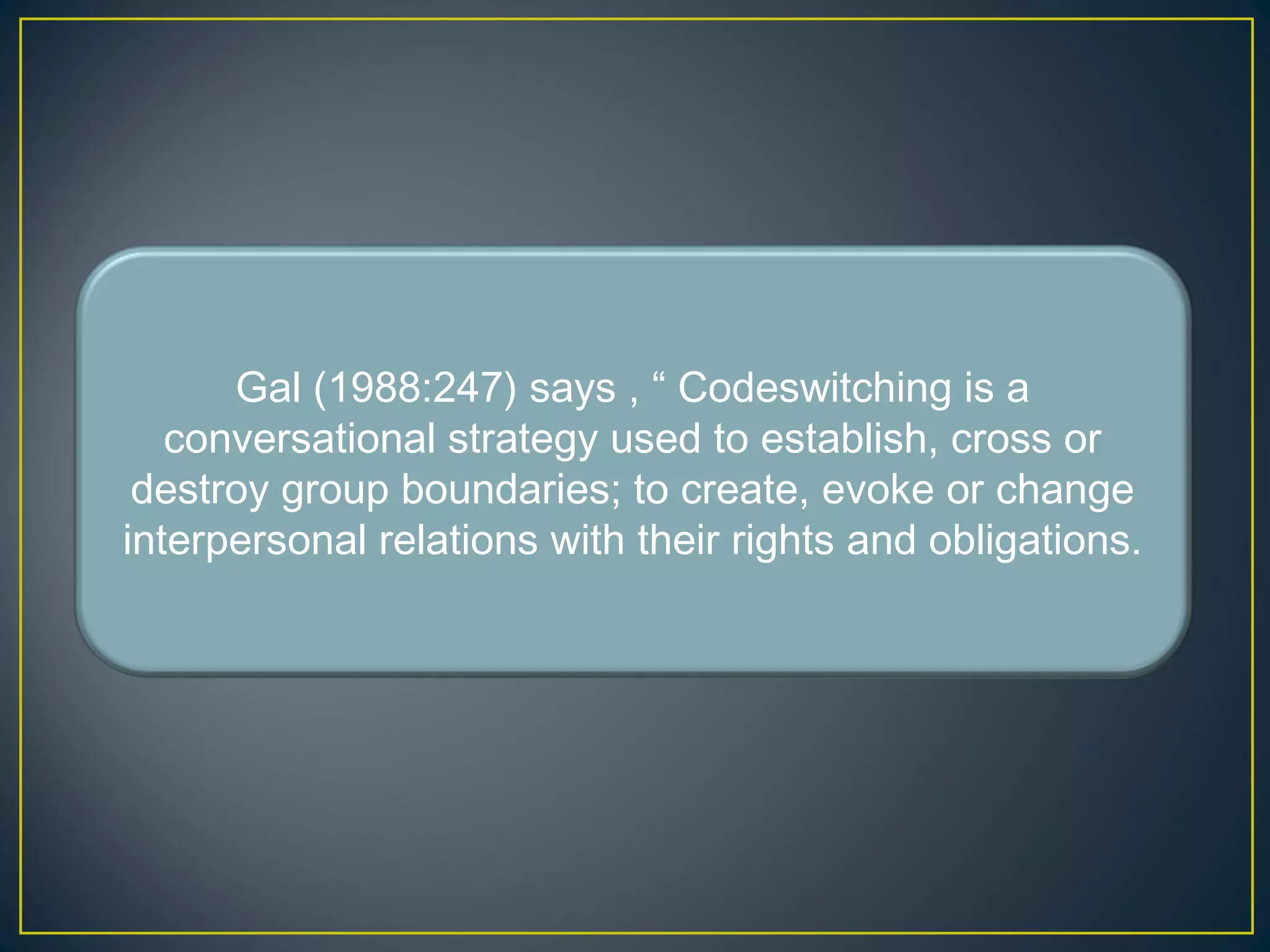

![• (The Maori is n italics. THE TRANSLATION IS IN
SMALL CAPITALS)
Sarah: I think everyone’s here except Mere.
John : She said she might be a bit late but
actually I think that’s her arriving now.
Sarah: You’re right. Kia ora Mere. Haere mai. Kei te
pehea koe?[HI MERE. COME IN. HOW ARE
YOU?]
Mere : Kia ora e hoa. Kei te pai. Have you started
yet?
[HELLO MY FRIEND. I’M FINE]](https://image.slidesharecdn.com/kel-160425052115/75/CODES-in-Sociolinguistics-42-2048.jpg)
![[BOKMAL IS IN SMALL CAPITALS. Ranamal in
lower case]
Jan : Hello Petter. How is your wife now?
Petter : Oh she’s much better thank you Jan. She’s
out of hospital and convalescing well.
Jan : That’s good, I’m pleased to hear it. DO YOU
THINK YOU COULD HELP ME WITH THIS
PESKY FORM?I AM HAVING A GREAT DEAL OF
DIFFICULTY WITH IT
Petter : OF COURSE. GIVE IT HERE](https://image.slidesharecdn.com/kel-160425052115/75/CODES-in-Sociolinguistics-43-2048.jpg)
